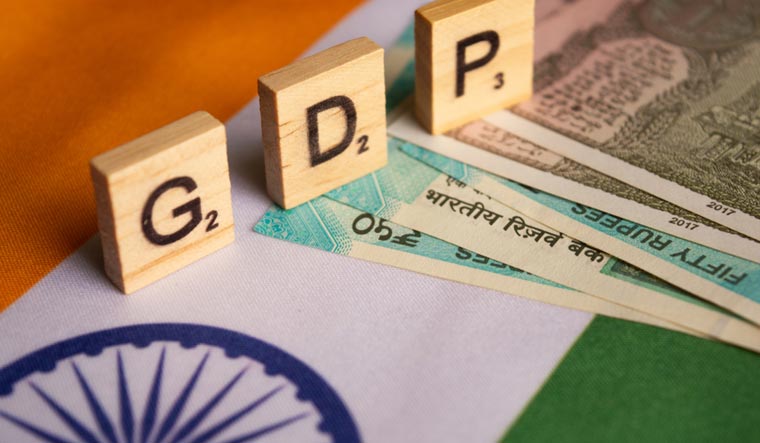The Indian economy contracted by 7.5 per cent in the July-September quarter of this fiscal amid the COVID-19 crisis, compared to 4.4 per cent growth in the same quarter last year, official data showed on Friday. With this, the second consecutive contraction, India enters a technical recession for the first time in its history.
According to data released by the National Statistical Office (NSO), India’s gross domestic product (GDP) in Q2 FY21 at Constant (2011-12) prices was Rs 33.14 lakh crore, as against Rs 35.84 lakh crore in the same period last year.
The economy had shrunk by an unprecedented 23.9 per cent in the first quarter of this fiscal due to the coronavirus pandemic and resultant lockdowns. Comparatively, the 7.5 per cent contraction was less steep—and lower than what many estimates forecast for the Indian economy this quarter. A Reuters poll, for instance, predicted an 8.8 per cent contractoin.
Other economic indicators showed mixed results, as production in some sectors was up compared to the previous year, while others—understandably hit by the coronavirus pandemic—showed a drastic decline.
Manufacturing clocked a surprise 0.6 per cent growth in July-September after it had shrunk by a massive 39 per cent in the preceding quarter. Continuing its good showing, the agriculture sector grew by 3.4 per cent, while the trade and services sector showed lower-than-expected contraction at 15.6 per cent. Public spending was down 12 per cent.
Production figures for rice (-2.9 per cent), cement (-10.6 per cent) and crude oil (-5.7 per cent) were in the negative, while production of fish (up 12.4 per cent), coal (up 5.5 per cent) and aggregate bank deposits (up 10.5 per cent) showed gains. The number of passengers handled at airports was down 77.4 per cent, while the Railways too saw a 90 per cent decline in the number of passenger kilometres logged.
LIC Premiums saw a huge increase, with 14.1 per cent growth in non-linked premiums and 38.6 per cent growth in linked premiums.
While imports of goods and services were down 16.4 per cent, exports were up by just 0.5 per cent.
The Index of Industrial Production showed a 7.1 per cent decrease in mining, a 6.8 per cent decrease in manufacturing, a 0.1 per cent increase in electricity and a 20.1 per cent decrease in metallic minerals.
For comparison, China—which was struck by the pandemic first and was also the first to recover from lockdown—saw its economy grow by 4.9 per cent in July-September this year, faster than the 3.2 per cent growth in April-June 2020.
Reserve Bank of India (RBI) Governor Shaktikanta Das had on Thursday stated that the recovery from the lockdown has been stronger than expected and the economy could show growth in the fourth quarter.
The improvement in the economy came ahead of next week's interest rate decision by the RBI and coincides with a drop in India's daily virus cases, which have tapered off to half of its peak of more than 97,000 infections a day in mid-September.
With inputs from PTI






